The 70’s
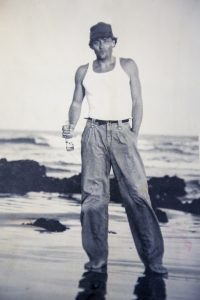 What a great decade for me. Music. There was lots of music. Concert after concert. Led Zeppelin, Springsteen, Neil Young, you couldn’t beat this era. I graduated high school and moved from the east coast of Virginia to the North Shore of Hawaii. For me, this move was all about surfing. All I cared about was getting to Hawaii, where the best waves in the world were. I arrived in the middle of the night but in the morning I awoke to see the bluest skies I’d ever seen, palm trees swaying in the wind and water so clear you could see straight to the bottom. It took me all of 5 seconds to decide I would never leave. I surfed a lot those first few years. At least 3 to 4 sessions a day. The best part of being on the North Shore in those early years were the uncrowded conditions. Although it was uncrowded, it was the wild west. Haoles (white guys) had to always look over their shoulders and well, I was a haole. We may have been the majority but it didn’t matter, if you screwed up, you paid for it. Dropping in on a local meant big trouble. Right or wrong, it didn’t matter, you were going to pay. Did people really get beat up? Oh yeah they did. In fact, twice for me in the seventies. Once in a night club and once in the water because a local dropped in on me and I rode behind him. Eventually, I realized I had to work to pay rent so I ended up getting a job as a shoe salesman, then a janitor, then a perishable food selector and finally a construction worker. At the age of 21, I decided to buy a camera with the intentions of becoming a surf photographer. I’d quickly learn that picking up my camera rather than my surfboard was next to impossible. It took a near fatal surf accident for me to follow thru with my plans. It was tough in the beginning because I knew no one. I was intimidated by the other photographers and would usually stick to shooting my friends. Eventually, I started to get noticed by the other surfers as the kid who took pretty good photos. In 1978 I had my first photo published as a quarter page shot in Surfing Magazine. Shortly after, a check for $25.00 showed up in my mail box. My future was decided, I was officially a published and paid surf photographer. It was a crazy and exciting time. Was it worth it? Hell yes! For me the seventies were the best, and I wouldn’t trade it for the world. All the incredible waves, the beginning of my life long obsession of taking pictures, and everything was starting to take shape for me.
What a great decade for me. Music. There was lots of music. Concert after concert. Led Zeppelin, Springsteen, Neil Young, you couldn’t beat this era. I graduated high school and moved from the east coast of Virginia to the North Shore of Hawaii. For me, this move was all about surfing. All I cared about was getting to Hawaii, where the best waves in the world were. I arrived in the middle of the night but in the morning I awoke to see the bluest skies I’d ever seen, palm trees swaying in the wind and water so clear you could see straight to the bottom. It took me all of 5 seconds to decide I would never leave. I surfed a lot those first few years. At least 3 to 4 sessions a day. The best part of being on the North Shore in those early years were the uncrowded conditions. Although it was uncrowded, it was the wild west. Haoles (white guys) had to always look over their shoulders and well, I was a haole. We may have been the majority but it didn’t matter, if you screwed up, you paid for it. Dropping in on a local meant big trouble. Right or wrong, it didn’t matter, you were going to pay. Did people really get beat up? Oh yeah they did. In fact, twice for me in the seventies. Once in a night club and once in the water because a local dropped in on me and I rode behind him. Eventually, I realized I had to work to pay rent so I ended up getting a job as a shoe salesman, then a janitor, then a perishable food selector and finally a construction worker. At the age of 21, I decided to buy a camera with the intentions of becoming a surf photographer. I’d quickly learn that picking up my camera rather than my surfboard was next to impossible. It took a near fatal surf accident for me to follow thru with my plans. It was tough in the beginning because I knew no one. I was intimidated by the other photographers and would usually stick to shooting my friends. Eventually, I started to get noticed by the other surfers as the kid who took pretty good photos. In 1978 I had my first photo published as a quarter page shot in Surfing Magazine. Shortly after, a check for $25.00 showed up in my mail box. My future was decided, I was officially a published and paid surf photographer. It was a crazy and exciting time. Was it worth it? Hell yes! For me the seventies were the best, and I wouldn’t trade it for the world. All the incredible waves, the beginning of my life long obsession of taking pictures, and everything was starting to take shape for me.
P.S.- I made my first water housing.



















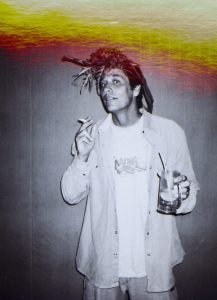 In early 80’s I decided to get serious about my work. In an effort to familiarize myself with other types of photography, I decided to make a short term move to LA. I worked for fashion and product photographers and even started shooting celebrities for an Australian gossip magazine. At some point that transformed into me shooting swimsuit models. It just so happened that during the same time Surfing Magazine was starting to publish a lot of girls in bikinis. They started taking notice of my work and before I knew it nine out of ten times the images Surfing Magazine used were mine. That led to Quiksilver hiring me to shoot their beach fashion campaign. I really think spending this time in L.A. helped develop me into a well rounded photographer and gave me experience that a lot of other surf photographers didn’t have. I believe this helped set me apart from the rest of the crew. In the end, all that really mattered to me was surf photography and I wasn’t getting enough of it. I moved to Australia for a short time and eventually found my way back to Hawaii. There was a lot of travel during this time. Indonesia, Bali, G-land, Australia. I was being paid to travel to a bunch of spots that were just starting to get noticed. It was a real privilege to have seen all those spots when they were uncrowded and still paradise. As far as surfing goes, it was a pretty wild time. As a sport, it was becoming more professional and was all about contests. There were crazy colorful wetsuits, flashy personalities and rave events that seemed to attract huge crowds. Big wave surfing was starting to get some recognition and this decade would mark the start of the Quiksilver Eddie Aikau Big Wave Invitational. This also happened to be that height of my party mode. How could it not be with MTV cranking awesome music from The Police, The Clash, The Cure, Tom Petty, the English Beat 24/7? MTV was the biggest thing ever. We were throwing massive parties and none would top our annual Mai Tai party. Seriously, it was truly the event of the winter. Everyone knew about it. It never slowed me down though. I still managed to get my butt out of bed and to the beach each morning to shoot.
In early 80’s I decided to get serious about my work. In an effort to familiarize myself with other types of photography, I decided to make a short term move to LA. I worked for fashion and product photographers and even started shooting celebrities for an Australian gossip magazine. At some point that transformed into me shooting swimsuit models. It just so happened that during the same time Surfing Magazine was starting to publish a lot of girls in bikinis. They started taking notice of my work and before I knew it nine out of ten times the images Surfing Magazine used were mine. That led to Quiksilver hiring me to shoot their beach fashion campaign. I really think spending this time in L.A. helped develop me into a well rounded photographer and gave me experience that a lot of other surf photographers didn’t have. I believe this helped set me apart from the rest of the crew. In the end, all that really mattered to me was surf photography and I wasn’t getting enough of it. I moved to Australia for a short time and eventually found my way back to Hawaii. There was a lot of travel during this time. Indonesia, Bali, G-land, Australia. I was being paid to travel to a bunch of spots that were just starting to get noticed. It was a real privilege to have seen all those spots when they were uncrowded and still paradise. As far as surfing goes, it was a pretty wild time. As a sport, it was becoming more professional and was all about contests. There were crazy colorful wetsuits, flashy personalities and rave events that seemed to attract huge crowds. Big wave surfing was starting to get some recognition and this decade would mark the start of the Quiksilver Eddie Aikau Big Wave Invitational. This also happened to be that height of my party mode. How could it not be with MTV cranking awesome music from The Police, The Clash, The Cure, Tom Petty, the English Beat 24/7? MTV was the biggest thing ever. We were throwing massive parties and none would top our annual Mai Tai party. Seriously, it was truly the event of the winter. Everyone knew about it. It never slowed me down though. I still managed to get my butt out of bed and to the beach each morning to shoot.



















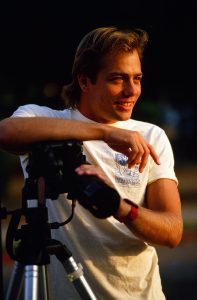 By the 90’s, I was pretty well embedded into the surf scene. I had spent the early 80’s sharpening my photography skills in L.A. and figured out that life does exist outside of the of Hawaii but that the North Shore was home for me. This couldn’t have been a more perfect arrangement. I spent my winters on the North Shore shooting the 7 mile miracle and the summers traveling around the world. The contest scene was no longer looking for locations that attracted the largest crowds but now was all about the biggest and best waves. This is when my career really took off. Although I was still working as a freelance photographer, clothing companies were sending me all over the world to shoot surf and the surf lifestyle. This allowed me to be one of the first photographers to shoot a lot of locations like Tahiti and the Mentawais. Quiksilver and Billabong were sending me to contests all over the world. There were only a few of us photographers that were lucky enough to be sent around the world. I loved this era. There was no social media, no computers, no online articles, it was all about the magazines and getting printed. You traveled to your destination, went out and shot and prayed you got it. There wasn’t a little black screen on the back of your camera to look at. You would go home and get your film developed to see what you have, send shots off to the magazines and then a month later you saw what they decided to run it in all the mags. It was pretty rad and very rewarding. It was like Christmas once a month. This was also the decade I started my life long obsession with shooting underwater surf images. There’s something about capturing a world we aren’t supposed to be in that I really like.
By the 90’s, I was pretty well embedded into the surf scene. I had spent the early 80’s sharpening my photography skills in L.A. and figured out that life does exist outside of the of Hawaii but that the North Shore was home for me. This couldn’t have been a more perfect arrangement. I spent my winters on the North Shore shooting the 7 mile miracle and the summers traveling around the world. The contest scene was no longer looking for locations that attracted the largest crowds but now was all about the biggest and best waves. This is when my career really took off. Although I was still working as a freelance photographer, clothing companies were sending me all over the world to shoot surf and the surf lifestyle. This allowed me to be one of the first photographers to shoot a lot of locations like Tahiti and the Mentawais. Quiksilver and Billabong were sending me to contests all over the world. There were only a few of us photographers that were lucky enough to be sent around the world. I loved this era. There was no social media, no computers, no online articles, it was all about the magazines and getting printed. You traveled to your destination, went out and shot and prayed you got it. There wasn’t a little black screen on the back of your camera to look at. You would go home and get your film developed to see what you have, send shots off to the magazines and then a month later you saw what they decided to run it in all the mags. It was pretty rad and very rewarding. It was like Christmas once a month. This was also the decade I started my life long obsession with shooting underwater surf images. There’s something about capturing a world we aren’t supposed to be in that I really like.




















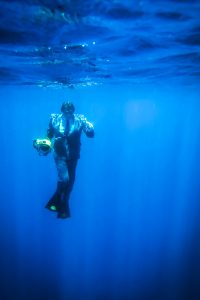 Y2K brought amazing changes in my life. I recently married my wife, Shawna, my third child, Tai, was on the way and I would also start an amazing 15 year run with TransWorld Surf Magazine. In my opinion, TransWorld Surf Magazine was a total game changer for the surf industry. TransWorld Surf employed a cast of characters, including the Cote brothers, with a distinct sense of humor. I was lucky enough to be part of this amazing staff. They sent me everywhere to photograph all that was happening in the world of surf. Can you imagine every great surfing location on the planet? Well, TransWorld sent me there. I just grabbed my gear and a plane ticket was waiting. Through my work with TransWorld, I developed an amazing relationship with Andy Irons. I was blessed to be able to travel with him for much of the years he was world champ. I got to see first hand the Andy vs. Kelly rivalry. It was probably the greatest, most intense battle between surfers I’ll ever see. I was also lucky enough to see how it blossomed into a great friendship between the two.
Y2K brought amazing changes in my life. I recently married my wife, Shawna, my third child, Tai, was on the way and I would also start an amazing 15 year run with TransWorld Surf Magazine. In my opinion, TransWorld Surf Magazine was a total game changer for the surf industry. TransWorld Surf employed a cast of characters, including the Cote brothers, with a distinct sense of humor. I was lucky enough to be part of this amazing staff. They sent me everywhere to photograph all that was happening in the world of surf. Can you imagine every great surfing location on the planet? Well, TransWorld sent me there. I just grabbed my gear and a plane ticket was waiting. Through my work with TransWorld, I developed an amazing relationship with Andy Irons. I was blessed to be able to travel with him for much of the years he was world champ. I got to see first hand the Andy vs. Kelly rivalry. It was probably the greatest, most intense battle between surfers I’ll ever see. I was also lucky enough to see how it blossomed into a great friendship between the two.































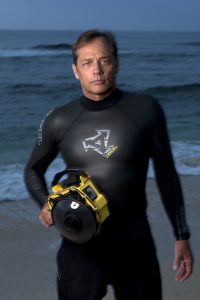 Andy Irons died.
Andy Irons died.




















